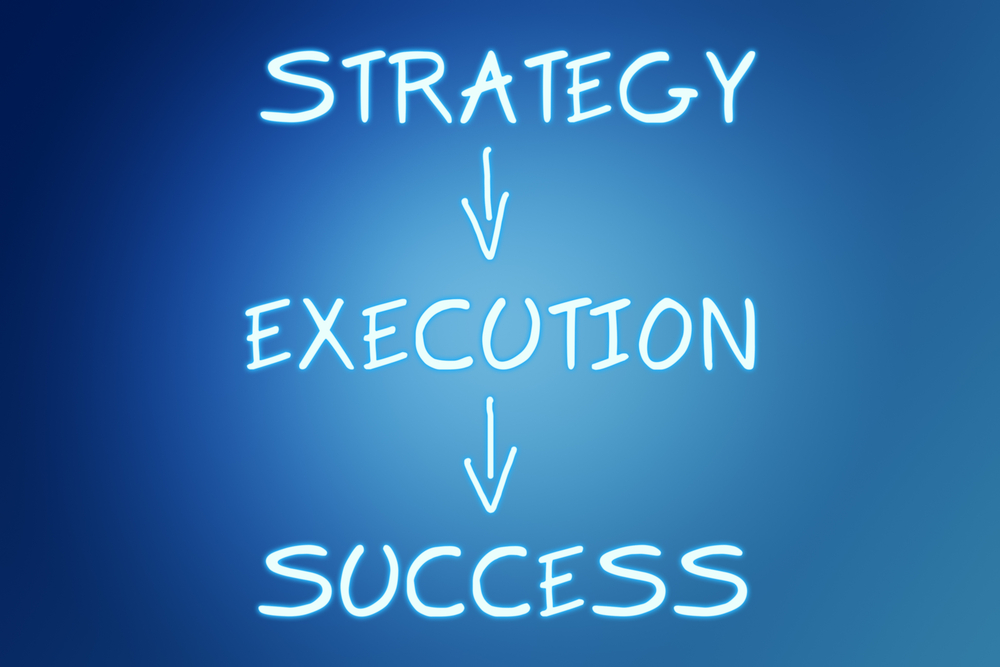Leadership is regularly cited as a root cause of execution failure. There are a number of reasons why, but most often leaders delegate execution to “the grunts”, thinking of it only as a series of metrics on a scorecard. This is an incredibly damaging mindset and a critical obstacle for leaders to overcome. If they want their organizations to reach their full potential, leaders need to be the most powerful and influential executors in their organizations.
So how do they do this? For starters, leaders need to think differently about strategy execution. They need to think of it not merely as putting plans into action and tracking their progress, but as a discipline to be practiced and honed as a core leadership responsibility. Just the same way we do with product innovation or company culture, for example. It deserves the leader’s full attention and investment. They need to immerse themselves in the experience and process of executing strategy. Embracing and engaging execution at a deeper level increases the chances of organizational success and growth.
The first steps leaders should take to become more influential executors include:
1. Understand what execution really is: At its core, execution is a form of organizational change – not merely a scorecard or dashboard. It involves guiding your organization from its current position to a newer and more desirable one. The strategic plan is simply a roadmap which leaders use to chart their course. Execution is both a tangible (measurable) and intangible (emotional) process. It is both formal (monthly reports) and informal (water cooler chats). Execution is a complicated psycho/social process where employees long for the past while brimming with excitement for the future. Leaders should immerse themselves in the emotional and behavioral aspects of execution in addition to the process and performance aspects. If leaders frame execution in human personal terms like they do with organizational change, they will be more aware and connected to the culture, feel, and vibe within their organizations. This provides valuable insight into how well, or not, the execution process is progressing.
2. Prepare for its challenges and obstacles: Strategy execution is subject to a myriad of threats and roadblocks. First and foremost, execution takes are really long time. It could take an organization one, three, or even five years to implement their plans. This means with each passing day more external forces creep up. Technology evolves. Demographics shift. Politics change. These factors push and pull the organization off its plan. Execution is also an incredibly wide-ranging process. It involves every single person in the organization and the thousands of decisions they make daily. With this comes leadership challenges like turf wars and conflict among staff and departments about resources, budgets, and priorities. Leaders should understand they will face many hurdles when executing strategy. No implementation goes flawlessly, so leaders need to be thinking several months and even years ahead about the internal and external forces that could derail their execution.
3. Build execution capabilities into your organization: Leadership is a popular topic among trainers and coaches. But when executing, the stakes for leaders become much higher. Their organizations depend on it. Leaders should invest in building powerful “execution capabilities” across the entire organization. This increases their chances for success, but it is also a slippery slope. The most valuable leadership learnings come not from mainstream and celebrity leadership books and articles. We all know leaders should be good communicators. We all should act with integrity. Those are not focused enough on execution to have any actionable value. The really valuable insights are built by mining and exploring the specific skills, traits, behaviors, and approaches critical to leading execution. No organization or strategy is the same. Therefore, the tools and techniques used to build relevant competencies in leaders and managers should be focused and framed around the specific plans to be executed. One size does not fit all here.
There is no magic bullet or secret sauce to successfully executing a strategy. However, leaders who are engaged in the process, do not delegate it out to others, anticipate potential problems, and recognize that execution skills can be cultivated, are in a much stronger position to succeed.
All organizations have plans. They may be formal strategic documents over 100 pages long or simply ideas sketched out on napkin. Either way, the leader’s job does not end just because the strategy is formulated. It is only just beginning.


